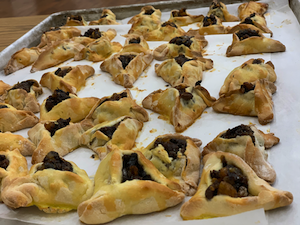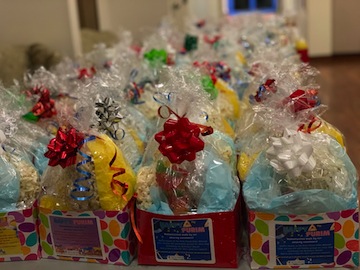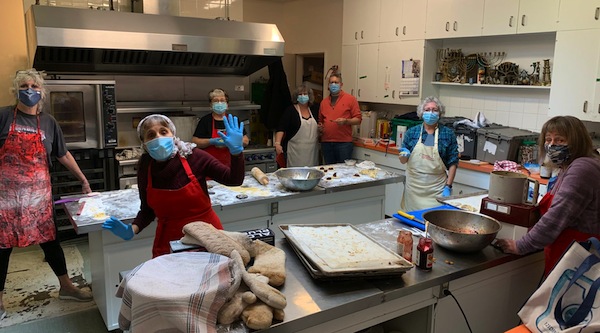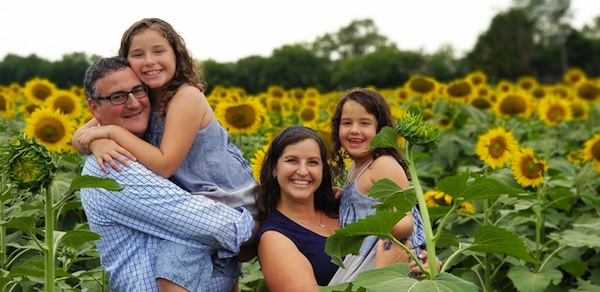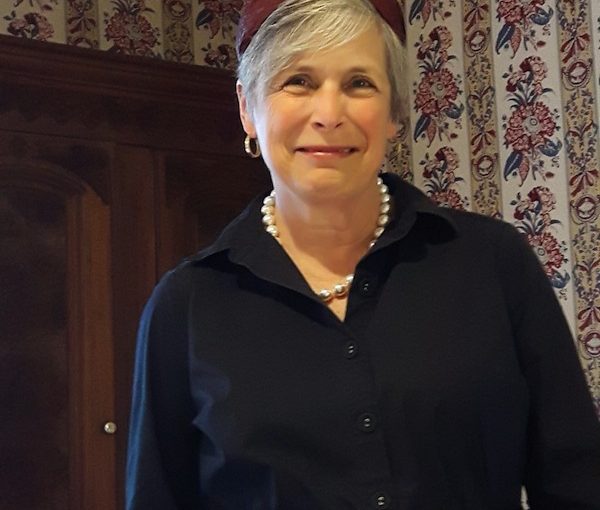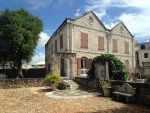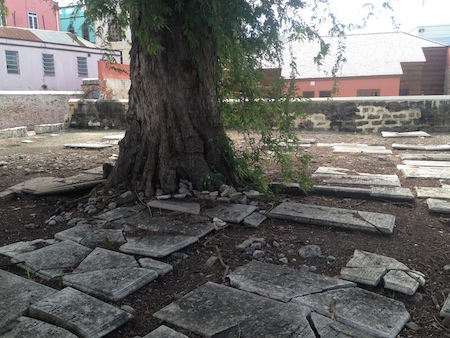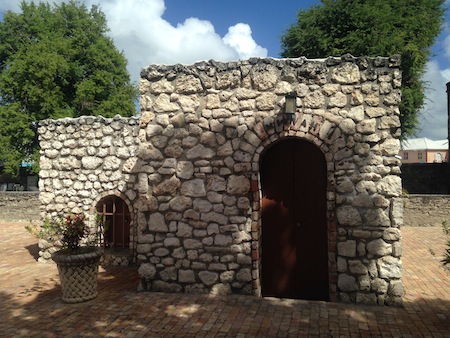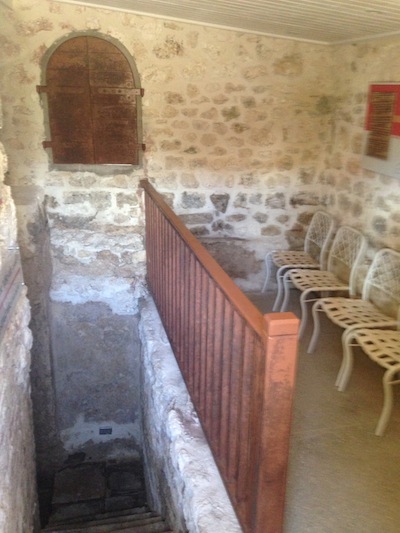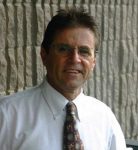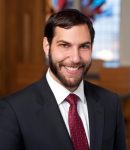Machzikei Hadas can be found on Rathmore Villas in Dublin. (photo from jewishgen.org)
When my bride and I lived in Dublin, we were strangers in a foreign land. Our refuges were the synagogues of the tiny Jewish community. It was there we found instant acceptance. We were in Dublin, escapees from the harsh extremes of temperature in the places where we used to live. Original products of Winnipeg, we had left Ottawa to pursue a life of retirement in Ireland. Recently married, we were getting to know each other again after leading separate lives since acquaintance in our teen years.
In Ireland, we benefited from the welcoming embrace of the country’s cradle-to-the grave social system, in spite of being alien residents. Seeking community associations, we joined a synagogue, the Dublin Jewish Progressive Congregation. It had the merit of permitting men and women to sit together, important to us at the time. However, we found that environment less fulfilling, and I began to attend another, more orthodox, establishment. Although it was in the main synagogue in Dublin where we had our Orthodox marriage – we were married previously by a justice in Canada and a progressive rabbi in Jerusalem – in the end, we found it, as well, less welcoming than we liked. Finally, we became firmly attached to a shtiebel, which is the subject of this memoir.
When I attended, Machzikei Hadas had maximum capacity of about 50 male worshippers. It was located in the annex of a house. Among the benches for seating were tables, which were used, after the services, for food and drink. About a third of the space was devoted to seating for women, behind a barrier with a curtained screen. Alcoves at the back had a small kitchen and a children’s playroom, with a door providing a separate entrance for women. A pulpit stood in the centre of the main room on the traditional raised area, used for reading from the Torah. The cantor, a volunteer from the group, led the services. The room was bare. The only adornments were a decorated cover for the cubicle where the scrolls were kept in the front of the room, and an embellished covering on the pulpit where the Torah was read.
The synagogue is managed by a group of about 10 men, with the assistance of some of their wives. The total membership is small. Aside from holidays, the congregation convenes once weekly, every Saturday morning. Ritual (Ashkenazi) is strictly observed. Men and women sit separately except for the Kiddush. When the time comes to eat and drink, men and women are seated cheek by jowl. One of the abiding attractions of this place is the generous table that is set after services each week, complete with bottles of Irish whiskey. Rarely are these returned to the cupboard with any contents. The participants look to salvation in their spirits and I have many times departed this place elevated in spirit, but somewhat the worse for wear.
The men in this congregation are of an independent-minded cast. They have resisted the blandishments of the main congregation in Dublin for decades, to maintain their independence. Every Saturday involves a struggle to ensure that the necessary 10 men are assembled for a formal service. Each attendee is precious, and his arrival is greeted with appreciation for his presence, as a member of a select group. Each regular has his appointed place to sit.
A unique feature of services is that they are often unruly, as the members exchange news and discuss notable occurrences during the past week. All join in the service at the appropriate places, but otherwise the exchange of news and views continues, nearly unabated, during their time in this place. I gloried in the down-to-earth atmosphere.
Members are chosen each week to mount the central platform, to have their name, and their father’s name, celebrated, in reading portions from designated chapter in the Torah. I was always thrilled to be called up, to have my father’s name announced. To me, it was as if my father could hear his name called out and he could witness that I was keeping his memory alive. Each time I had the opportunity, I loudly exclaimed the requisite prayer, to awaken my father from his slumbers.
Each of the principals in the synagogue I grew to know was in some way markedly distinct from my experience with any other group to which I have belonged. Each, in his way, was key to the successful operation of the synagogue. Attendance, management, security, accumulation of food and drink supplies, almost everyone played a role, often supplementing needs from their own pockets.
David, the secretary, a young man, seemed to be a prime mover. He carried the concerns of the synagogue in his mind at all times. Inhabiting the rough-and-tumble world of classic car sales, he was nonetheless devout in his observance.
Michael, the president, seemed to perform his role under David’s prompting, taking everything with collegial grace. More “laissez-faire,” he was an enthusiastic participant in the consumption of Irish whiskey. He often brought his beautiful, wilful, but adorable 5-year-old son with him to synagogue.
The triumvirate was rounded out by Terry, the inveterate cantor. A convert to Judaism, he progressed through the prayer agenda, in spite of the babble behind him, and would cheerfully give up his place to visiting presenters. With his American wife, Karen, he was a mainstay of the synagogue, and a fierce defender of all elements of ritual observance. We looked over our shoulders to see if he was watching when we transgressed. We are hoping and prayerfully expecting the Deity to be more lenient in His judgments of us than was Terry.
Melvin, my seatmate, took care that I did not blunder in my observance, using the right book, reading the right page. Richard, an Irish convert who spent time on kibbutz in Israel, sat behind us. A civil servant, he has shared with me the mysteries and intricacies of Irish bureaucracy and politics. Sturdy participants in the demolition of many a whisky container, I would gladly have them by my side, anywhere, whatever I had to face.
Joe, a truly lovable mensch, sat across the aisle. He and his brother Robbie, many years in Ireland, still bear the accents they brought with them from Slovakia. Purveyors of parchment, they are the synagogue Cohens, necessary for the reading of the scrolls. Robbie is the synagogue treasurer, openly eager for a tip on the stock market.
Alec sits at the back. He is a retired person of the legal profession and the real brains of our outfit. He was usually at the centre of discussions, dispensing wisdom and wit.
Monty was my real favorite, and we had a meeting of the minds. With him, I shared my deepest secrets and my tendency to violent extremism in defence of Israel. He sat far forward in splendid isolation, focused on his worship. He did occasionally join us for a bite and a wee dram. I am regularly in contact with him to this day, years after I have departed the Emerald Isle.
Eddie was a more recent returnee, coming from some other Irish place. A Levi, he played a ritual role. He was our mellifluous cantor on many occasions, generous with his time and effort. Enthusiastic of voice and social commentary, he disapproved of our unruly behavior in the back of the room. He appeared to be discomfited by too much public attention to the Jewish fact and the attention garnered by Israel’s struggle to survive. We have different views as to Jewish public policy, but he was often a cheerful addition to our services.
There are too many others to enter into detail. What a pleasure it was to have been to be a part of all this! How can I express fully the depth of my feeling of kinship, the strength of my appreciation for having been made so welcome within this community? The participants may have seemed at times cavalier in observance, but they cling fiercely to their synagogue and its perpetuation. I have been moved to tears there by my readings in the scrolls, and filled with joy, my enthusiasm raucous, in singing some of the prayers together with my fellow Jews. When we sang out together, my voice roared – I wished to sing louder and louder so the Divine would hear – and my heart soared to be there with my brothers in that place.
A stranger, I was embraced and made to feel a part of this tribal fellowship. There, I felt free to worship in my own way. There, one’s foibles might be the subject of critical humor, but they were accepted. Some of my best times in Ireland were spent in that place. I am grateful and thankful for all those who made that precious corner of Jewish life what it was. It remains with me always as something I seek in other congregations. I celebrate it and its members. Am Yisroel chai!
Max Roytenberg is a Vancouver-based poet, writer and blogger. His new book, Hero In My Own Eyes, is forthcoming.
